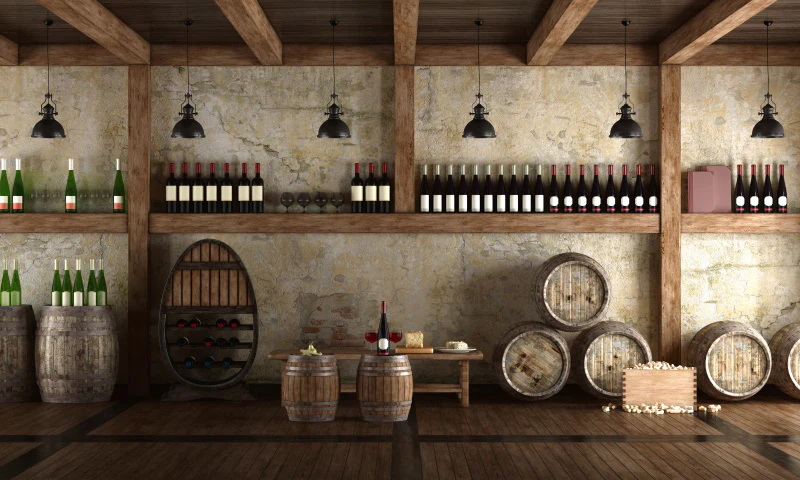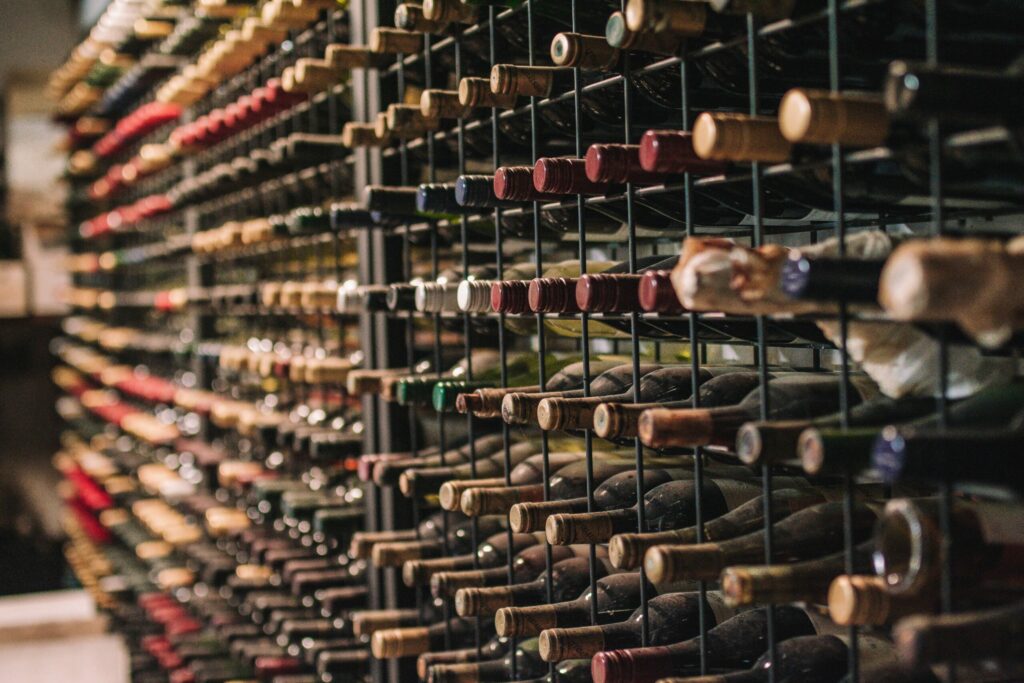Managing a wine cellar requires more than space and good intentions. A number of pitfalls to avoid can compromise the quality of your collection. The slightest negligence can alter aromas or accelerate bottle degradation.
Poor preservation: an underestimated danger
The most common problem is poor bottle storage. Many people underestimate the importance of temperature and humidity. Wine stored at over 20°C ages too quickly. Too low a temperature slows down the wine's evolution. The ideal temperature is around 12°C, stable all year round. Humidity also plays a fundamental role. Too dry, and corks dry out. Too damp, and the result is mold and illegible labels. A humidity level of between 70% and 75% is suitable for most cellars.
Poorly managed lighting: a destructive factor

Light is another common wine cellar mistake. Wine hates direct exposure. The UV rays accelerate aging, alter color and degrade aromas. A poorly protected or overly-lit cellar quickly becomes harmful. Darkness or soft light is the best way to protect your bottles. It's also advisable to avoid neon lights, which are too harsh on wines.
Vibration: a silent enemy
Constant vibration is an invisible danger. They prevent sediment from settling. This impairs the clarity and stability of the wine. Agitation also destabilizes aromatic compounds. Some people install their cellar near a washing machine or in a busy hallway, and poor preservation is guaranteed. Opt for an isolated, stable location. Quality wine cabinets generally include an effective anti-vibration base.
Incorrect bottle positioning
Vertical placement of bottles is one of the most common pitfalls to avoid. A cork exposed to air dries quickly. This lets oxygen through, oxidizing the wine before its time. The wine must always remain in contact with the cork. Storing bottles lying down limits this risk. It's also advisable to keep the labels facing upwards. This makes them easier to read and avoids unnecessary handling of the bottles.
Lack of organization: inefficient management

Not organizing your bottles according to their ageing potential makes it difficult to keep track of them. Some wines are best drunk young, others need time to mature. Poor cellaring is sometimes the result of an oversight or lack of monitoring. Classifying your bottles by vintage or appellation helps you plan openings more effectively. A well-structured cellar helps avoid losses and unpleasant surprises.
Lack of ventilation: watch out for odours
A poorly ventilated cellar becomes a real trap. Unpleasant odors, stagnant humidity and mold quickly take hold. Wine, which is sensitive to its environment, sometimes absorbs these nuisances. Good ventilation prevents cardboard, plastic or stale odors from permeating the cork. Installing a suitable ventilation system is one of the pitfalls to avoid.
Storage of unsuitable products
Storing household products or foodstuffs in the cellar is detrimental to wine. These products emit volatile compounds. These can penetrate the cork and contaminate the wine. This type of poor preservation often occurs in cellars shared with other uses. It's best to reserve the cellar for wine only. No odorous products should be stored there.
No follow-up: a classic mistake
Managing a cellar without an inventory leads to oversights. A wine to be drunk young can wait several years without being opened. A forgotten grand cru can pass its peak without anyone noticing. Keeping a notebook or using an app helps to avoid these wine cellar mistakes. Make a note of purchase dates, consumption periods and planned tastings.
Ignoring ageing advice
Not all wines age in the same way. Some powerful reds gain in complexity over the years. Others fade quickly. The wine to be aged must be chosen with care. Neglecting the advice of winemakers or sommeliers is one of the pitfalls to avoid. Information on vintages and ideal conditions is essential for every bottle.
An overstuffed cellar: a counterproductive choice
Accumulating too many bottles may seem prestigious, but it makes management more difficult. An overloaded cellar becomes difficult to ventilate, organize and inspect. It's best to limit your selection. This ensures better preservation of the wine and facilitates regular checks. Quality must take precedence over quantity.
Neglecting the evolution of personal taste
Over time, tastes evolve. What seemed like a good buy ten years ago no longer necessarily corresponds to today's tastes. Accumulating bottles that no longer appeal is one of the most regrettable wine cellar mistakes. It's important to evaluate your stock regularly. Adapting your purchases to your current preferences allows you to enjoy each bottle to the full.
Neglecting transport conditions
Last but not least, failure to take proper care of wine from the moment of purchase compromises its quality. An unprotected car journey in the middle of summer is enough to spoil a bottle. Transporting wine in stable, cool conditions limits thermal shock. This is essential for wine conservation, even before it reaches the cellar.
If you enjoyed this article, please feel free to read the following article "Exploring Australia's wines: unique grape varieties to discover"which may also be of interest to you!





